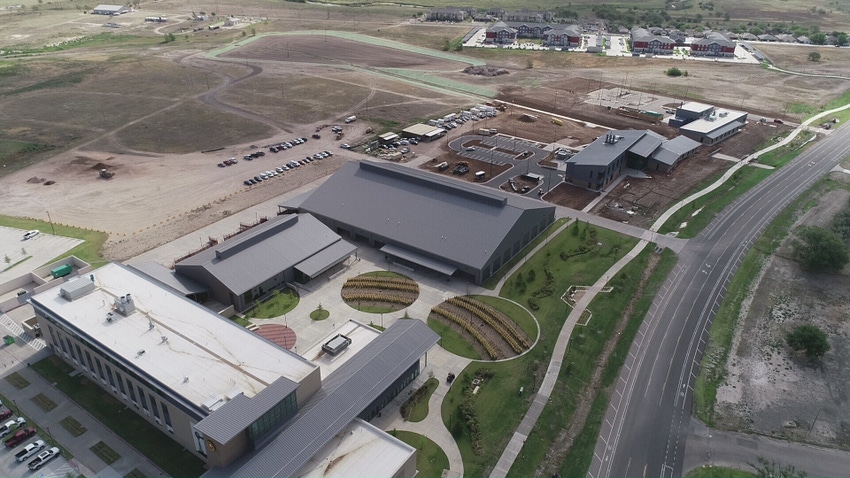Texas A&M System to hold VERO grand opening
Grand opening celebration scheduled for VERO Building and TVMDL Building, which opened in September in Texas Panhandle.
October 20, 2020

The Texas A&M College of Veterinary Medicine & Biomedical Sciences (CVMBS), West Texas A&M University (WT) and the Texas A&M Veterinary Medical Diagnostic Laboratory (TVMDL) will celebrate the grand opening Nov. 19 of two facilities that will further expand upon the Texas A&M University System’s veterinary medical, education, service and research missions in the Texas Panhandle.
Texas A&M System chancellor John Sharp, Texas A&M president Michael K. Young, WT president Dr. Walter Wendler, CVMBS dean Dr. John August and TVMDL director Dr. Bruce Akey will commemorate the opening of the Veterinary Education, Research & Outreach (VERO) Building and the Charles W. Graham DVM TVMDL Building during the ceremony.
Both facilities opened in September, signaling the culmination of the Texas A&M System’s investment in large animal health in the Texas Panhandle, WT said in an announcement. The project is supported by $90 million in capital improvements and $5 million in faculty hires, for a total investment of $95 million in the Texas Panhandle. Ground was broken on both buildings in December 2018.
The VERO Building is a $22 million, 36,000 sq. ft. facility that now serves as a regional veterinary teaching center and creates a gateway to CVMBS for students interested in pursuing veterinary medicine from the Texas Panhandle and west Texas while also facilitating collaborative, multidisciplinary research among scientists from across the region, WT said.
Not only are WT pre-veterinary students taught in the facility, but it will also serve as the home for the 2+2 doctor of veterinary medicine program at CVMBS, which will enroll its first cohort of up to 18 first-year veterinary medicine students in the fall of 2021.
The VERO initiative offers other unique educational opportunities for current CVMBS veterinary students, including fourth-year clinical rotations, immersive externships, summer internships and food animal production-focused tours that introduce them to the region and the livestock industries, WT said.
The building also houses on-site researchers who will continue to address Texas Panhandle-specific issues and those with broad impact on the livestock industries.
The TVMDL facility, named after a Texas A&M distinguished alumnus and equine veterinarian, is a $17.6 million, 22,000 sq. ft. building that features the latest technology for diagnostic services in bacteriology, pathology, serology and virology as well as spaces for receiving and processing and necropsy and support.
The opening of the building in September signaled a relocation to Canyon, Texas, from its previous location in Amarillo, Texas, which was opened in 1975 to specifically serve the panhandle’s cattle feedlot industry as an extension of the College Station, Texas-based laboratory.
Almost 50 years later, TVMDL’s panhandle laboratory has expanded its clientele to more than just livestock producers, offering testing for almost every animal species for some of the largest animal agriculture companies in the world as well as the ever-important smaller, independent producers, the announcement said.
The Canyon-based facility offers an open-flow laboratory environment for enhanced collaboration, including one of only two high-containment, Bio-safety Level 3 laboratories in Texas specifically designed to test for high-consequence animal diseases that pose a significant threat to the agricultural economy and public health.
Even as one of the largest and busiest diagnostic labs in the country, TVMDL makes education and training of colleagues a priority and will serve as a practical training ground for future veterinarians while also actively providing training experiences for undergraduates, residents, newly minted veterinarians and postdoctoral students.
Both the VERO facility and TVMDL’s relocation to the WT campus will further strengthen the Texas A&M System's focus on veterinary medicine in the Texas Panhandle.
You May Also Like
.png?width=300&auto=webp&quality=80&disable=upscale)


